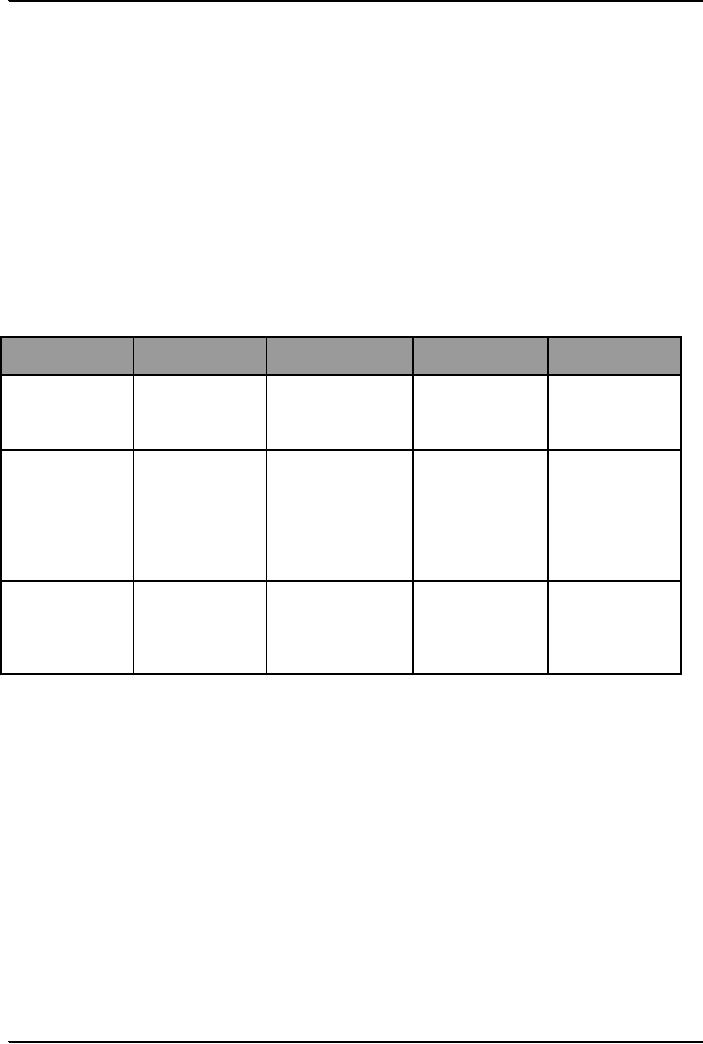 |
AUDITORS’ REPORT |
| << AN INTRODUCTION |
| Advantages and Disadvantages of Auditing >> |

Fundamentals
of Auditing ACC 311
VU
Lesson
02
Fundamentals
of Auditing
Auditing
An Introduction
What
is an auditor's report?
The
primary aim of an audit is to enable the
auditor to say "these
accounts show a true and
fair view" or, of
course,
to say that "they do not
show a true and fair
view".
At the
end of his audit, when he has
examined the entity, its
record, and its financial
statements, the auditor
produces
a report addressed to the owners/stake
holders in which he expresses
his opinion of the truth
and
fairness,
and sometimes other aspects,
of the financial statements.
Standard
format of Auditor's Report as
per the Companies Ordinance
1984:
FORM
35A
AUDITORS'
REPORT
We
have audited the annexed balance
sheet of COMPANY NAME as at THE DATE
and the related
profit
and
loss account, cash flow
statement and statement of
changed in equity together with the notes
forming
part
thereof, for the year then
ended and we state that we
have obtained all the information
and
explanations
which to the best of our knowledge
and belief were necessary
for the purposes of our
audit.
It is the
responsibility of the company's management to
establish and maintain a system of
internal control
and
prepare and present the
above said statements in
conformity with the approved accounting
standards
and
the requirements of the Companies Ordinance,
1984. Our responsibility is to express an
opinion on
these
statements based on our
audit.
We
conducted our audit in
accordance with the auditing
standards as applicable in Pakistan.
These
standards
require that we plan and
perform the audit to obtain
reasonable assurance about whether
the
above
said statements are free of
any material misstatement. An
audit includes examining, on a test
basis,
evidence
supporting the amounts and
disclosures in the above said
statements. An audit also
includes
assessing
the accounting policies and significant
estimates made by management, as
well as evaluating the
overall
presentation of the above said
statements. We believe that
our audit provides a reasonable
basis for
our
opinion and, after due
verification, we report that:
a) In
our opinion, proper books of
accounts have been kept by
the company as required by the
Companies
Ordinance, 1984
b) In
our opinion:
i. The
balance sheet and profit
and loss account together
with the notes thereon have
been
drawn-up in
conformity with the Companies Ordinance,
1984, and are in agreement
with the
books of
account and are further in
accordance with accounting
policies consistently applied
ii.
The expenditure incurred during the year
was for the purpose of the
company's business;
and
iii.
The business conducted
investments made and the expenditure
incurred during the year
were
in
accordance with the objects of the
company.
c) In
our opinion and to the best
of our information and
according to the explanations given to us,
the
balance
sheet, profit and loss
account, cash flow statement
and statement of changes in equity
together
with
the notes forming part
thereof conform with approved
accounting standards as applicable
in
Pakistan
and, give the information required by the
Companies Ordinance, 1984, in the manner
so
required
and respectively give a true and
fair view of the state of the
company's affairs as at DATE
and
of the
profit/loss its cash flows
and changes in equity for the
year then ended;
and
d) In
our opinion Zakat deductible at
source under the Zakat and
Usher Ordinance, 1980 was
deducted by
the
company and deposited in the Central
Zakat Fund established under
Section 7 of that Ordinance.
Date
Signature
Place
(Name(s)
of Auditors)
3

Fundamentals
of Auditing ACC 311
VU
Standard
format of Auditor's Report as
per the International
Auditing Standards:
INDEPENDENT
AUDITOR'S REPORT
[Appropriate
Addressee]
Introductory
Paragraph
We
have audited the accompanying financial
statements of ABC Company,
which comprise the
balance
sheet
as at December 31, 20X1, and
the income statement, statement of
changes in equity and cash
flow
statement
for the year then ended,
and a summary of significant accounting
policies and other
explanatory
notes.
Management's
Responsibility for the Financial
Statements
Management
is responsible for the preparation and
fair presentation of these financial
statements in
accordance
with International Financial Reporting
Standards. This responsibility includes:
designing,
implementing
and maintaining internal control relevant
to the preparation and fair presentation of
financial
statements
that are free from
material misstatement, whether due to
fraud or error; selecting and
applying
appropriate
accounting policies; and making
accounting estimates that
are reasonable in the
circumstances.
Auditor's
Responsibility
Our
responsibility is to express an opinion on
these financial statements
based on our audit. We
conducted
our
audit in accordance with
International Standards on Auditing.
Those standards require that we
comply
with
ethical requirements and plan
and perform the audit to
obtain reasonable assurance whether
the
financial
statements are free from
material misstatement.
An
audit involves performing
procedures to obtain audit
evidence about the amounts and
disclosures in the
financial
statements. The procedures
selected depend on the auditor's judgment,
including the assessment
of the
risks of material misstatement of the
financial statements, whether due to
fraud or error. In making
those
risk assessments, the auditor considers
internal control relevant to the entity's preparation
and fair
presentation of the
financial statements in order to design
audit procedures that are
appropriate in the
circumstances,
but not for the purpose of
expressing an opinion on the
effectiveness of the entity's
internal
control.
An audit also includes evaluating the
appropriateness of accounting policies
used and the
reasonableness
of accounting estimates made by
management, as well as evaluating the
overall presentation
of the financial
statements.
We
believe that the audit
evidence we have obtained is sufficient
and appropriate to provide a basis
for our
audit
opinion.
Opinion
In our
opinion, the financial statements give a
true and fair view of (or"
present fairly, in all
material
respects,")
the financial position of ABC Company as
of December 31, 20X1, and of
its financial
performance
and its cash flows
for the year then ended in
accordance with International
Financial
Reporting
Standards.
Report on
Other Legal and Regulatory
Requirements
[Form
and content of this section of the auditor's
report will vary depending on the nature
of the auditor's
other
reporting responsibilities.]
[Auditor's
signature]
[Date
of the auditor's report]
[Auditor's
address]
What
stands for auditor's
opinion?
The
auditor, in his report, does
not say that the financial
statements do show a true
and fair view. He can
only
say that in his opinion the
financial statements show a true
and fair view. The reader or
user of
financial
statements will know from
his knowledge of the auditor whether or
not to rely on the auditor's
opinion.
If the auditor is known to be independent,
honest, and competent, then
his opinion will be
relied
upon.
4

Fundamentals
of Auditing ACC 311
VU
What
are the different types of
audit?
Three
types of audits are
discussed in general,
i.e.,
1. Financial
statement audits
2.
Operational audits
3.
Compliance audits
Financial
Statement Audits
An
audit of financial statements is
conducted to determine whether the
overall financial statements (the
quantifiable
information being verified) are
stated in accordance with
specified criteria. Normally, the
criteria
are the requirements of the applicable
International Financial Reporting
Standards (IFRSs) and
the
Companies
Ordinance 1984. The financial statements
most commonly comprises of the Balance
Sheet,
Income
Statement, Statement of Changes in
Equity, Cash Flow Statement,
and Notes to the
accounts.
The
assumption underlying an audit of
financial statements is that these
will be used by different
groups for
different
purposes. Therefore, it is more efficient
to have one auditor who
will perform an audit and
draw
conclusions
that can be relied upon by
all users than to have
each user perform his or
her own audit. If a
user
believes that the general
audit does not provide
sufficient information for
his or her purposes, the
user
has
the option of obtaining more
data. For example, a general
audit of a business may
provide sufficient
financial
information for a banker considering a
loan to the company, but a corporation
considering a
merger
with that business may
also wish to know the
replacement cost of fixed
assets and other
information
relevant to the
decision. The corporation
may use its own auditors to
get the additional
information.
Operational
Audits
An operational
audit is a review of any part of an
entity's operating procedures and methods
for the
purpose
of evaluating efficiency and effectiveness. At the
completion of an operational audit,
recommendations
to management for improving
operation are normally
expected.
An
example of an operational audit is evaluating the
efficiency and accuracy of processing
payroll
transactions
in a newly installed computer system. Another
example, where most
accountants would feel
less
qualified is evaluating the efficiency, accuracy,
and customer satisfaction in
processing the distribution
of
letters and parcels by a courier
company such as TCS.
Because
of the many different areas in
which operational effectiveness can be
evaluated, it is impossible to
characterize
the conduct of a typical operational audit. In one organization,
the auditor might evaluate
the
relevancy
and sufficiency of the information used
by management in making decisions to
acquire new fixed
assets,
while in a different organization the
auditor might evaluate the efficiency of
the paper flow in
processing
sales.
In operational
auditing, the reviews are not
limited to accounting. They can include
the evaluation of
organization
structure, computer operations, production
methods, marketing, and any
other area in which
the
auditor is qualified.
The
conduct of an operational audit and the reported
results are less easily
defined than for either of
the
other
two types of audits.
Efficiency and effectiveness of
operations are far more
difficult to evaluate
objectively
than compliance or the presentation of financial
statements in accordance with
accounting
conventions
and principles; and establishing criteria
for evaluating the quantifiable
information in an
operational
audit is an extremely subjective
matter.
In this
sense, operational auditing is more
like "management consulting"
than what is generally regarded
as
"auditing".
Operational auditing has
increased in importance in the past
decade.
Compliance
Audits
The
purpose of a compliance audit is to
determine whether the entity is following
specific procedures,
rules,
or
regulations set down by some
higher authority.
A
compliance audit for a
private business could include determining whether
accounting personnel
are
following
the procedures prescribed by the company
controller, reviewing wage rates
for compliance with
minimum
wage laws, or examining contractual
agreements with bankers and
other lenders to be sure
the
company
is complying with legal
requirements.
In the
audit of governmental units such as
districts school, there is
extensive compliance auditing
due to
extensive
regulation by higher government authorities. In virtually
every private and non
profit organization,
5

Fundamentals
of Auditing ACC 311
VU
there
are prescribed policies,
contractual agreements, and
legal requirements that may
call for compliance
auditing.
Results
of compliance audits are
typically reported to someone within the
entity being audited rather than
to
a broad
spectrum of users.
Management,
as opposed to outside users, is the
primary group concerned with the extent
of compliance
with
certain prescribed procedures
and regulations. Hence, a significant
portion of work of this type is
done
by auditors
employed by the entity itself.
There
are exceptions; when an organization
wants to determine whether individuals or
entities that are
obligated to
follow its requirements are
actually complying, the auditor is
employed by the entity issuing
the
requirements.
An
example is the auditing of taxpayers
for compliance with the
federal tax laws, where the
auditor is
employed
by the government to audit the taxpayers' tax
returns.
Following
table summarizes the three types of
audits and includes an
example of each type and
an
illustration
of three of the key parts of the
definition of auditing applied to each
type of audit.
Examples
of the Three Types of
Audits
TYPES
OF
EXAMPLE
QUANTIFIABLE
ESTABLISHED
AVAILABLE
AUDIT
INFORMATION
CRITERIA
EVIDENCE
Financial
Annual
Audit of
General
Motors
International
Documents,
Statement
Audit
General
Motors'
financial
statements
Financial
records,
and
financial
Reporting
outside
sources
statements
Standards
of
evidence
Operational
Evaluate
whether
Number
of payroll
Company
Error
reports,
Audit
the
computerized
records
processed
standards
for
payroll
records,
payroll
processing
in a
month, costs of
efficiency
and
and
payroll
for
subsidiary is
the department,
and
effectiveness
in
processing
costs
number of
errors
payroll
operating
made
department
efficiently
and
effectively
Compliance
Determine
if
Company
records
Loan
agreement
Financial
Audit
bank
provisions
statements
and
requirements
for
calculations
by
loan
continuation
the
auditor
have
been met
6
Table of Contents:
- AN INTRODUCTION
- AUDITORS’ REPORT
- Advantages and Disadvantages of Auditing
- OBJECTIVE AND GENERAL PRINCIPLES GOVERNING AN AUDIT OF FINANCIAL STATEMENTS
- What is Reasonable Assurance
- LEGAL CONSIDERATION REGARDING AUDITING
- Appointment, Duties, Rights and Liabilities of Auditor
- LIABILITIES OF AN AUDITOR
- BOOKS OF ACCOUNT & FINANCIAL STATEMENTS
- Contents of Balance Sheet
- ENTITY AND ITS ENVIRONMENT AND ASSESSING THE RISKS OF MATERIAL MISSTATEMENT
- Business Operations
- Risk Assessment Procedures & Sources of Information
- Measurement and Review of the Entity’s Financial Performance
- Definition & Components of Internal Control
- Auditing ASSIGNMENT
- Benefits of Internal Control to the entity
- Flow Charts and Internal Control Questionnaires
- Construction of an ICQ
- Audit evidence through Audit Procedures
- SUBSTANTIVE PROCEDURES
- Concept of Audit Evidence
- SUFFICIENT APPROPRIATE AUDIT EVIDENCE AND TESTING THE SALES SYSTEM
- Control Procedures over Sales and Debtors
- Control Procedures over Purchases and Payables
- TESTING THE PURCHASES SYSTEM
- TESTING THE PAYROLL SYSTEM
- TESTING THE CASH SYSTEM
- Controls over Banking of Receipts
- Control Procedures over Inventory
- TESTING THE NON-CURRENT ASSETS
- VERIFICATION APPROACH OF AUDIT
- VERIFICATION OF ASSETS
- LETTER OF REPRESENTATION VERIFICATION OF LIABILITIES
- VERIFICATION OF EQUITY
- VERIFICATION OF BANK BALANCES
- VERIFICATION OF STOCK-IN-TRADE AND STORE & SPARES
- AUDIT SAMPLING
- STATISTICAL SAMPLING
- CONSIDERING THE WORK OF INTERNAL AUDITING
- AUDIT PLANNING
- PLANNING AN AUDIT OF FINANCIAL STATEMENTS
- Audits of Small Entities
- AUDITOR’S REPORT ON A COMPLETE SET OF GENERAL PURPOSE FINANCIALSTATEMENTS
- MODIFIED AUDITOR’S REPORT